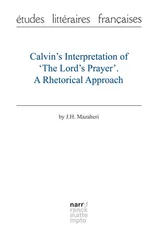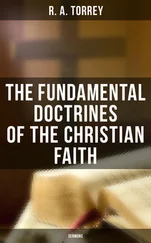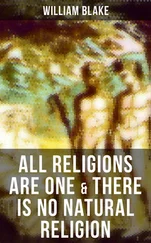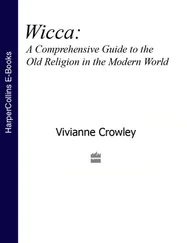John Calvin - Institutes of the Christian Religion
Здесь есть возможность читать онлайн «John Calvin - Institutes of the Christian Religion» — ознакомительный отрывок электронной книги совершенно бесплатно, а после прочтения отрывка купить полную версию. В некоторых случаях можно слушать аудио, скачать через торрент в формате fb2 и присутствует краткое содержание. Жанр: unrecognised, на английском языке. Описание произведения, (предисловие) а так же отзывы посетителей доступны на портале библиотеки ЛибКат.
- Название:Institutes of the Christian Religion
- Автор:
- Жанр:
- Год:неизвестен
- ISBN:нет данных
- Рейтинг книги:5 / 5. Голосов: 1
-
Избранное:Добавить в избранное
- Отзывы:
-
Ваша оценка:
- 100
- 1
- 2
- 3
- 4
- 5
Institutes of the Christian Religion: краткое содержание, описание и аннотация
Предлагаем к чтению аннотацию, описание, краткое содержание или предисловие (зависит от того, что написал сам автор книги «Institutes of the Christian Religion»). Если вы не нашли необходимую информацию о книге — напишите в комментариях, мы постараемся отыскать её.
Institutes of the Christian Religion — читать онлайн ознакомительный отрывок
Ниже представлен текст книги, разбитый по страницам. Система сохранения места последней прочитанной страницы, позволяет с удобством читать онлайн бесплатно книгу «Institutes of the Christian Religion», без необходимости каждый раз заново искать на чём Вы остановились. Поставьте закладку, и сможете в любой момент перейти на страницу, на которой закончили чтение.
Интервал:
Закладка:
XI. I am neither ignorant, nor desirous of concealing, that they evade the charge by a more subtle distinction, which will soon be noticed more at large. They pretend that the reverence which they pay to images is ειδωλοδουλεια, (service of images,) but deny that it is ειδωλολατρεια (worship of images.) For in this manner they express themselves, when they maintain, that the reverence which they call dulia, may be given to statues or pictures, without injury to God. They consider themselves, therefore, liable to no blame, while they are only the servants of their idols, and not worshippers of them; as though worship were not rather inferior to service. And yet, while they seek to shelter themselves under a Greek term, they contradict themselves in the most childish manner. For since the Greek word λατρευειν signifies nothing else but to worship, what they say is equivalent to a confession that they adore their images, but without adoration. Nor can they justly object, that I am trying to insnare them with words: they betray their own ignorance in their endeavours to raise a mist before the eyes of the simple. But, however eloquent they may be, they will never be able, by their rhetoric, to prove one and the same thing to be two different things. Let them point out, I say, a difference in fact, that they may be accounted different from ancient idolaters. For as an adulterer, or homicide, will not escape the imputation of guilt, by giving his crime a new and arbitrary name, so it is absurd that these persons should be exculpated by the subtle invention of a name, if they really differ in no respect from those idolaters whom they themselves are constrained to condemn. But their case is so far from being different from that of former idolaters, that the source of all the evil is a preposterous emulation, with which they have rivalled them by exercising their minds in contriving, and their hands in forming, visible symbols of the Deity.
XII. Nevertheless, I am not so scrupulous as to think that no images ought ever to be permitted. But since sculpture and painting are gifts of God, I wish for a pure and legitimate use of both; lest those things, which the Lord hath conferred on us for his glory and our benefit, be not only corrupted by preposterous abuse, but even perverted to our ruin. We think it unlawful to make any visible figure as a representation of God, because he hath himself forbidden it, and it cannot be done without detracting, in some measure, from his glory. Let it not be supposed that we are singular in this opinion; for that all sound writers have uniformly reprobated the practice, must be evident to persons conversant with their works. If, then, it be not lawful to make any corporeal representation of God, much less will it be lawful to worship it for God, or to worship God in it. We conclude, therefore, that nothing should be painted and engraved but objects visible to our eyes: the Divine Majesty, which is far above the reach of human sight, ought not to be corrupted by unseemly figures. The subjects of those arts consist partly of histories and transactions, partly of images and corporeal forms, without reference to any transactions. The former are of some use in information or recollection; the latter, as far as I see, can furnish nothing but amusement. And yet it is evident, that almost all the images, which have hitherto been set up in the churches, have been of this latter description. Hence it may be seen, that they were placed there, not with judgment and discrimination, but from a foolish and inconsiderate passion for them. I say nothing here of the impropriety and indecency conspicuous in most of them, and the wanton licentiousness displayed in them by the painters and statuaries, at which I have before hinted: I only assert, that even if they were intrinsically faultless, still they would be altogether unavailing for the purposes of instruction.
XIII. But, passing over that difference also, let us consider, as we proceed, whether it be expedient to have any images at all in Christian temples, either descriptive of historical events, or representative of human forms. In the first place, if the authority of the ancient Church have any influence with us, let us remember, that for about five hundred years, while religion continued in a more prosperous state, and purer doctrine prevailed, the Christian churches were generally without images. They were then first introduced, therefore, to ornament the churches, when the purity of the ministry had begun to degenerate. I will not dispute what was the reason which influenced the first authors of them; but if you compare one age with another, you will see that they were much declined from the integrity of those who had no images. Who can suppose, that those holy fathers would have permitted the Church to remain so long destitute of what they judged useful and salutary for it? The fact was, that, instead of omitting them through ignorance or negligence, they perceived them to be of little or no use, but, on the contrary, pregnant with much danger; and, therefore, intentionally and wisely rejected them. This is asserted in express terms by Augustine: “When they are fixed,” says he, “in those places in an honourable elevation, to attract the attention of those who are praying and sacrificing, though they are destitute of sense and life, yet, by the very similitude of living members and senses, they affect weak minds, so that they appear to them to live and breathe,” &c.185 And in another place: “For that representation of members leads, and, as it were, constrains, the mind, which animates a body, to suppose that body to be endued with perception, which it sees to be very similar to its own,” &c. And a little after: “Idols have more influence to bow down an unhappy soul, because they have a mouth, eyes, ears, and feet, than to correct it, because they neither speak, nor see, nor hear, nor walk.” This indeed appears to be the reason of John's exhortation to “keep ourselves,” not only from the worship of idols, but “from idols” themselves. And we have found it too true, that, through the horrible frenzy, which, almost to the total destruction of piety, hath heretofore possessed the world, as soon as images are set up in churches, there is, as it were, a standard of idolatry erected; for the folly of mankind cannot refrain from immediately falling into idolatrous worship. But, even if the danger were less, yet, when I consider the use for which temples were designed, it appears to me extremely unworthy of their sanctity, to receive any other images, than those natural and expressive ones, which the Lord hath consecrated in his word; I mean Baptism, and the Supper of the Lord, and the other ceremonies, with which our eyes ought to be more attentively engaged, and more sensibly affected, than to require any others formed by human ingenuity. Behold the incomparable advantages of images! the loss of which, if you believe the papists, nothing can compensate.
XIV. The remarks already made on this subject, I think, would be sufficient, if it were not necessary to take some notice of the Council of Nice; not that very celebrated one, which was convened by Constantine the Great, but that which was held about eight hundred years ago, by the command, and under the auspices, of the Empress Irene. For that Council decreed, not only that images should be had in churches, but also that they should be worshipped. And, notwithstanding what I have advanced, the authority of the Council would raise a strong prejudice on the contrary side. Though, to confess the truth, I am not much concerned at this, as I am to show the reader their extreme madness, whose fondness for images exceeded any thing that was becoming in Christians. But let us despatch this point first: the present advocates for the use of images, allege the authority of that Nicene Council in their defence. There is a book extant, written in refutation of this practice, under the name of Charlemagne; which, from the diction, we may conclude was composed at the same time. In this work are recited the opinions of the bishops who attended the Council, and the arguments they used in the controversy. John, the delegate of the Eastern churches, said, “God created man in his own image;” and hence he inferred that we ought to have images. The same prelate thought that images were recommended to us by this sentence: “Show me thy face, for it is glorious.” Another, to prove that they ought to be placed on the altars, cited this testimony: “No man lighteth a candle, and putteth it under a bushel.” Another, to show the contemplation of these to be useful to us, adduced a verse from a Psalm: “The light of thy countenance, O Lord, is sealed upon us.” Another pressed this comparison into his service: “As the patriarchs used the sacrifices of the heathen, so Christians ought to have the images of saints, instead of the idols of the heathen.” In the same manner they tortured that expression, “Lord, I have loved the beauty of thy house.” But the most ingenious of all was their interpretation of this passage: “As we have heard, so have we seen;” that therefore God is known, not only by the hearing of his word, but by the contemplation of images. Similar is the subtlety of Bishop Theodore: “God is glorious in his saints.” And in another place it is said, “In the saints that are in the earth:” therefore this ought to be referred to images. But their impertinencies and absurdities are so disgusting, that I am quite ashamed to repeat them.
Читать дальшеИнтервал:
Закладка:
Похожие книги на «Institutes of the Christian Religion»
Представляем Вашему вниманию похожие книги на «Institutes of the Christian Religion» списком для выбора. Мы отобрали схожую по названию и смыслу литературу в надежде предоставить читателям больше вариантов отыскать новые, интересные, ещё непрочитанные произведения.
Обсуждение, отзывы о книге «Institutes of the Christian Religion» и просто собственные мнения читателей. Оставьте ваши комментарии, напишите, что Вы думаете о произведении, его смысле или главных героях. Укажите что конкретно понравилось, а что нет, и почему Вы так считаете.












